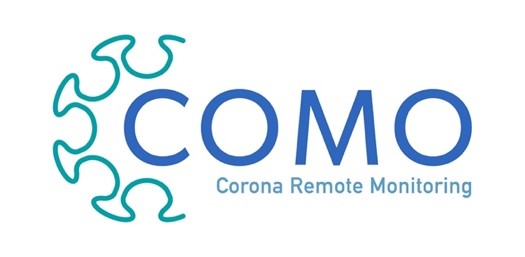
Objectives of the service
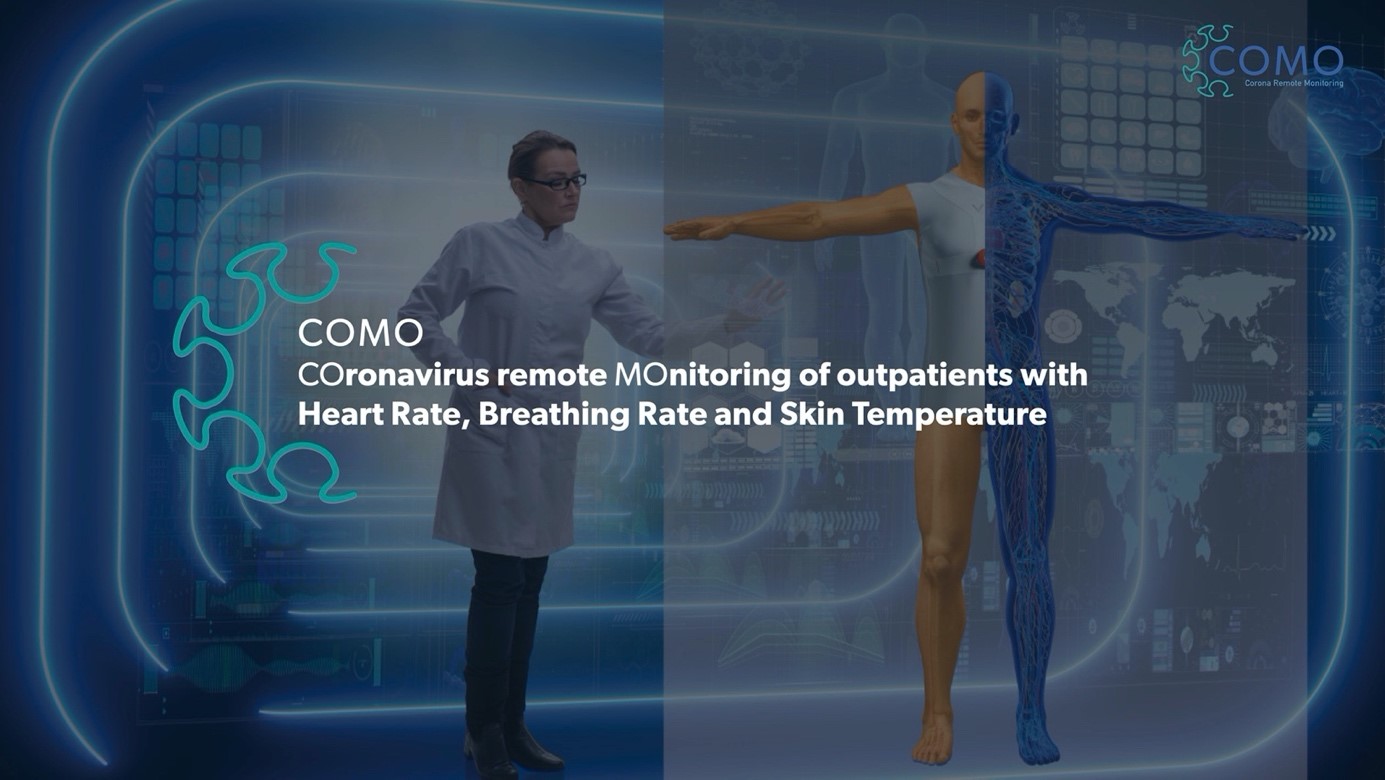
The COMO project was launched in July 2020 shortly after the outbreak of the corona pandemic. The Swiss-Italian project consortium has developed a service for real time remote monitoring of patients in order to relieve the hospital infrastructure in the case of a pandemic such as COVID-19 as well as under normal conditions. This service enables patients to stay at home while being remotely surveyed by physicians at hospitals or general practices (GP) and to reduce the need of physical visits and contacts. In case of a pandemic, the monitoring system should enable to:
-
reduce saturation of hospitals and other healthcare institutions.
-
provide sufficiently accurate triage criteria to allow infected patients to remain at home.
-
reduce consequently the contagious spread among healthcare professionals.
-
address the specific need of people living in self-isolation or quarantine.
The pilot was executed in two stages with two different partners:
In a first stage from 24.11.-15.12.2020 at the Luigi Sacco hospital in Milan (I) the system was tested and validated with 20 patients hospitalized for interstitial pneumonia and acute respiratory failure in COVID-19. The tests at Sacco hospital run under the responsibility of the cardiology director, Prof. Dr. Maurizio Viecca.
In a second stage the system was piloted from 15.01.-31.05.2022 at the Centro Neurolesi Bonino Pulejo IRCCS in Messina (I) with 47 patients discharged after COVID-19 infection with heart failure symptoms (‘long-Covid’ group a) or discharged after acute heart failure (group b) or patients that suffers from chronic heart failure and are recruited for cardiovascular rehabilitation (group c). The pilot run under the overall responsibility of the director Prof. Dr. Placido Bramanti and the scientific lead of Dr. Emanuela Mazzon, executed by the medical cardiology leader Dr. Pietro Grioli and his team. The goal was to demonstrate that the use of the system would bring a reduction in time and cost spent per patient and would allow to reduce check-up visit frequency of patients with stable health conditions.
Users and their needs
The service is dedicated to different user groups such as physicians in hospitals or GPs, nurses and patients. It enables physicians at hospital to efficiently monitor the health evolution of a large number of patients and to react if critical parameters exceed predefined threshold values. At the same time, it can reduce time and costs spent per patient and in the case of a pandemic it can relieve the infrastructure in hospitals and prevent the spread of infectious diseases.
The patients feel much better cared for knowing that their vital parameters are monitored by medical professionals. The system supports easy communication between physician patient within the application. In addition the physician knows the GEO position of the patient as well as the actual body position and activity, important information for situations in which the patient needs additional medical support.
Service/ system concept
The starting point for the project is an existing wearable system originally developed for the use in professional sports. The system consists of two sensors, initially developed for ESA missions, that are attached to a chest strap which applies them on each side of the chest cage against the skin. Both sensors are equipped with a re-chargeable battery, a Bluetooth module and the electronics and firmware necessary to process the signals.
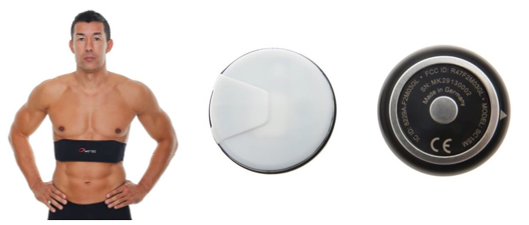
The system is continuously measuring ECG, heart rate, respiration, breathing rate, activity/posture (detection of movements) and skin temperature. In addition to the sensors to be worn with a special chest strap, further medical wearables such as a pulse oximeter or a telephoto thermometer were integrated into the solution according to the specific use cases and requests of the physicians. All wearable devices are connected to the smartphone or tablet via Bluetooth.
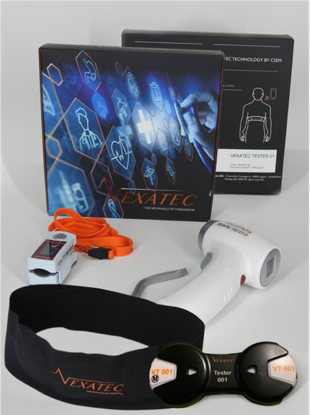
Even though an existing wearable device could be used for the COMO project, many elements of the final COMO solution still had to be developed within the framework of the project. The following system and service architecture was defined and built for the COMO solution:
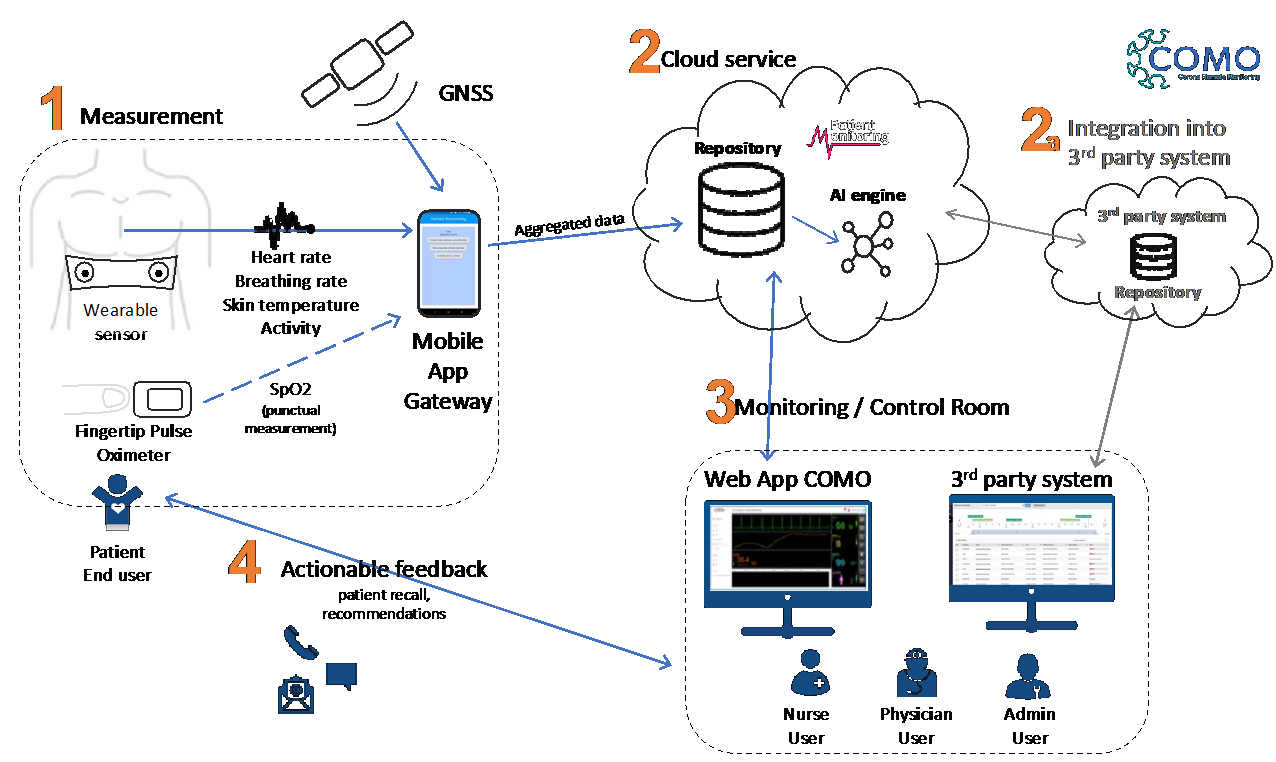
All measurement data are sent via Bluetooth to a mobile device (patient’s smartphone or tablet) and aggregated with geo-referenced data before being uploaded to a cloud service platform. This monitoring platform application is providing health care professionals to observe remotely the health evolution of multiple patients and includes the following key features:
-
stores and displays all patient data mainly all measured parameters either in real-time or historical data
-
parameters can be set according to the use case
-
threshold values can be set for each parameter and individually per patient
-
manages and classifies the notifications if values trespass individual thresholds
-
offers the possibilities to communicate with patients within the application in different ways (text messages or voice/video calls)
-
the user of the monitoring platform not only knows the user’s geo position but also the body position and activity
-
User rights can be adapted to the different user groups
The monitoring application is web based and runs on any user terminal with internet access.
For the second stage of the project the COMO system was integrated over a cloud-to-cloud connection to an existing monitoring solution (see point 2a in image: system architecture).
Space Added Value
The space assets used in this project include:
-
Human Spaceflight Technologies: part of the remote health status monitoring technologies used for the COMO service are based on the outcomes of several studies and tests developed in the frame of the LTMS (Long Term Medical Survey System) activities run by CSEM for ESA (Monitoring of physiological parameters in analogue environment such as the Concordia station in Antarctica).
-
Satellite Navigation allows to aggregate patient health data with geo-referenced data. Movements of infected patients can be analyzed more precisely and potential virus propagation via social meetings can be forecasted and highlighted.
Current Status
The software solution could be developed in a very short time, but the course of the Corona pandemic led to scarce medical resources and very limited patient access. The originally intended setup was adapted as a result and the system was tested in two stages with different use cases and medical partners.
Pilot results have confirmed the reliability of the system and the measured data. Furthermore, it could be demonstrated that with the use of the COMO solution in the tested use cases with de-hospitalized patients, the time and costs per patient can be significantly reduced. All involved users were very satisfied with the use of the system and would recommend and be willing to use it in case of a pandemic such as COVID-19.
All physicians involved see great potential in a system like COMO for further medical applications. These statements are supported by the fact that the system can be customized and supplemented with other wearable devices without big effort. Vexavit will not only drive the commercialization of its wearable sensor technology, but with the monitoring platform it has another independent product that is to be offered commercially in the medical sector and later also in other fields of application. Telemedicine especially telemonitoring is still at the beginning of a major evolution and the consortium is proud that that they have been able to develop a marketable component for this through the COMO project.





